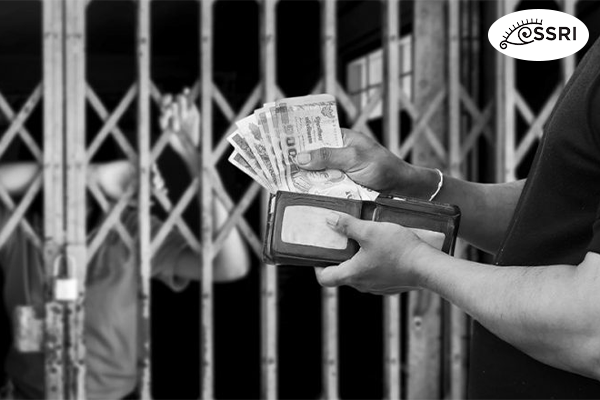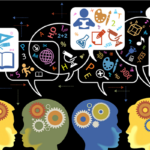Human trafficking is a critical issue in contemporary criminology, often facilitated by organized crime networks. This criminal activity involves transporting individuals across international borders and within countries for sexual exploitation and as sources of cheap, unskilled labor in developed nations. Victims are typically lured with false promises of better job opportunities and educational prospects. While coercion and abduction are less common, they do occur. Governments, social organizations, and non-governmental organizations are actively working to combat this lucrative trade through awareness campaigns.
Introduction
Human trafficking encompasses the recruitment and transportation of individuals to distant locations or their confinement where they are treated as slaves, forced to work, and subjected to servitude. In Europe and America, the revenue from human trafficking approaches nearly $9 billion annually. The Council of Europe reports that human trafficking has reached epidemic proportions globally, with an estimated annual market value of $42 billion. Victims are often recruited through coercion, deception, fraud, and sometimes through abuse of power or outright abduction.
Victims frequently face exploitation through threats or acts of violence and are further exploited through economic leverage, such as debt bondage. Once recruited, they may endure various forms of sexual exploitation, including prostitution and forced labor. Children are particularly vulnerable and may be forced into prostitution, illegal adoption, early marriages, conscription as child soldiers, sports exploitation, begging, or involvement in religious cults.
Conclusion
Efforts to combat human trafficking are ongoing, with increased awareness and intervention from governments and organizations worldwide. Addressing this complex crime requires a multifaceted approach to protect vulnerable populations and dismantle the networks that perpetuate modern-day slavery.
Distinguishing Human Trafficking from People Smuggling
Human trafficking fundamentally differs from people smuggling. In human trafficking, victims are coerced or forced against their will, while people smuggling involves individuals who voluntarily agree to be transported, typically in exchange for a fee, despite the illegality of the act. Unlike smuggled individuals, who generally regain their freedom upon reaching their destination, trafficked victims remain enslaved and often face exploitative conditions, particularly in cases of debt bondage. Traffickers strip victims of basic human rights, using deceit, false promises, and sometimes physical force to lure and control them.
Traffickers employ coercive and manipulative tactics, such as deception, feigned affection, and force-feeding illegal drugs, to maintain control over their victims. Individuals seeking entry into another country may be misled by traffickers, who promise freedom after crossing the border but instead trap them in a cycle of exploitation. While raiding and abduction are less common methods, they further underscore the severe nature of human trafficking compared to people smuggling.
The Profitable Nature of Human Trafficking
Human trafficking has become increasingly profitable in recent decades, fueling its widespread growth. This illicit trade is notably prevalent in Russia and parts of Eastern Europe, where large criminal organizations dominate the industry. Globally, however, human trafficking is often conducted on a smaller scale by well-organized networks. These groups operate with specific roles based on their location, including recruitment, advertising, transportation, and exploitation.
The trafficking business is highly lucrative due to its low startup costs and high profit margins. Operating largely underground, human trafficking presents relatively low risks of prosecution for traffickers, further contributing to its expansion.
At-Risk Populations
Individuals most susceptible to human trafficking are often from vulnerable and marginalized groups with limited power and opportunities. These victims frequently come from impoverished backgrounds, minority ethnic communities, or include displaced persons, runaways, and refugees. Women, in particular, are at high risk for sex trafficking. Traffickers exploit limited job opportunities by promising better employment and educational prospects, only to coerce victims into prostitution.
Human trafficking agents arrange travel and job placements for victims, escorting them to their destinations. Upon arrival, many victims quickly realize they have been deceived about the nature of their employment. However, escaping becomes perilous and difficult due to the coercive and abusive conditions they face.
Exploitation of Children in Human Trafficking
Traffickers often exploit extreme poverty, targeting parents who may feel compelled to sell their children to alleviate debt or meet basic needs. In some cases, traffickers deceive parents with false promises of education and a better future for their children. In regions like West Africa, many young victims are orphaned due to AIDS and are coerced into becoming child soldiers, undergoing rigorous training for armed conflicts.
Research also indicates that legal adoption processes can be manipulated for baby trafficking. Expectant mothers from regions such as West Africa and developing countries like India may find their children trafficked to places like the United States.
Adoption scandals often arise from systemic vulnerabilities, particularly in international adoptions. Studies reveal that thousands of children worldwide are trafficked for sexual exploitation, with significant numbers originating from Asia, South America, and West Africa. These children may be sold by their parents, kidnapped, or orphaned due to natural disasters. Additionally, men are trafficked for labor that requires no specialized skills, contributing to an industry that generates over $30 billion globally, according to the International Labour Organization.
Current Scope of Human Trafficking
Human trafficking is an illegal and covert activity that employs various methods, making it difficult to obtain precise global statistics. According to the U.S. Department of State, approximately 800,000 individuals, including both adults and minors, fall victim to trafficking across state borders each year. Of these, about 70% are women, and the remaining 30% are minors.
Research highlights that many trafficking victims are exploited for sex trade. Additionally, the U.S. Department of State reports that a significant number of individuals are enslaved and subjected to labor exploitation, often within their home countries. Human rights organizations face challenges in tracking these cases, leading to an underestimation of those trafficked for unskilled labor. Data from the National Human Rights Center in California estimates that around 100,000 individuals are currently forced into labor in the United States, with approximately 30% working as domestic servants, including some children.
Child Domestic Servitude and Human Trafficking in the United States
The practice of human trafficking involving children providing domestic services in the United States mirrors a prevalent, illegal tradition from West Africa. In many remote areas of West Africa, families send their children to nearby cities in search of job opportunities, hoping to improve their income. Often, young girls offer their services for free in exchange for food provided by their employers.
This practice has created additional avenues for human trafficking, especially when African employers migrate to the U.S. and become citizens. Research conducted by students at the University of California, representing an organization dedicated to combating human trafficking, found that approximately 45% of trafficking victims in the United States are forced into sexual exploitation. Additionally, 27% are subjected to domestic servitude, while 10% and 17% are involved in agriculture and other occupations, respectively.
Key Factors Driving Human Trafficking
Human trafficking is driven by a range of factors, with economic instability being one of the most prominent. Victims often come from regions with limited job opportunities and are frequently targeted by organized crime groups. Regional economic imbalances and disparities between countries contribute significantly to the prevalence of trafficking. Additionally, trafficking is more common in societies plagued by social discrimination, corrupt governments, political instability, and armed conflicts.
In some countries, inadequate policies can exacerbate trafficking issues. For example, communities displaced by large-scale projects may not be properly resettled or provided with necessary rehabilitation. Traffickers are drawn to marginalized, impoverished areas due to the high profits they can gain. Research indicates that insufficient penalties for traffickers and lax laws regarding sex tourism perpetuate the problem, as traffickers can afford to pay fines and continue their illegal activities.
Child trafficking is heavily influenced by demand from pedophiles, driving the exploitation of minors for profit. According to the United Nations, ineffective governance and weak human rights organizations contribute significantly to the increase in trafficking, particularly of women for sex trade. These institutions often fail to address the role of traffickers, focusing instead on blaming victims.
Moreover, porous borders between source and destination countries complicate efforts to control human trafficking. Advances in communication technology have accelerated the trade, allowing traffickers to conduct transactions more efficiently. Unlike drugs, which are sold once, trafficking victims can be resold multiple times before reaching their final destination. The porous borders created during the Soviet era, particularly in the Asian market, have significantly contributed to the global human trafficking crisis.
Challenges in Addressing Human Trafficking
Research highlights several complex issues related to human trafficking, particularly in the context of the sex trade. Human trafficking generally refers to the movement of individuals, especially women, across or within countries for the purpose of sex work. This often involves physical force, deception, and debt bondage.
A significant debate arises when the concept of coercion is excluded from the definition of human trafficking, potentially allowing individuals to engage in prostitution willingly. For instance, the UK’s 2003 legislation on sex offenses does not require proof of force, deception, or coercion to prosecute sex-related crimes. This broad interpretation means that individuals entering the UK for sex trade are covered under the act, regardless of their consent. This has led to controversy, as prostitution is often equated with sexual exploitation and viewed as a violation of basic rights for women and minors.
Women and young girls often fall victim to traffickers in hopes of providing financial support for themselves or their families. Traffickers may initially offer legitimate work or study opportunities, typically in industries like catering or hospitality. However, victims frequently endure psychological torture and social isolation, whether in their home countries or at their destinations. Reintegration into their local communities can be challenging due to stigma, intolerance, and inadequate social support.
Compounding these issues are the limited government assistance and social services available to victims upon their return to their home countries. Additionally, traffickers may force victims into criminal activities, such as drug trafficking, leading to further legal repercussions for the victims.
Efforts to Combat Human Trafficking: Strategies and Challenges
Research indicates that success in combating human trafficking varies widely among different organizations, including governments, international bodies, and non-governmental organizations (NGOs). While some governments have implemented legislation to criminalize human trafficking, others focus on developing cooperative systems with foreign nations and enforcement agencies to tackle the issue. These collaborative efforts are often supported by NGOs working in tandem with government bodies.
However, many governments have been criticized for their lack of aggressive action in identifying and assisting trafficking victims. Weak immigration policies can exacerbate the problem, leading to re-victimization and insufficient prevention measures for at-risk individuals. Criticism has also been directed at countries that address human trafficking primarily for sexual exploitation, neglecting other forms of trafficking.
Efforts to Combat Human Trafficking: Strategies and Challenges
Research shows that efforts to combat human trafficking have produced mixed results across different entities, including governments, international organizations, and non-governmental organizations (NGOs). While some governments have enacted legislation to criminalize human trafficking, others focus on fostering international cooperation and leveraging enforcement agencies alongside NGOs.
However, many governments have faced criticism for inadequate responses to human trafficking. This is often due to weak immigration policies that can lead to re-victimization and fail to prevent vulnerable populations from becoming trafficking victims in the future. Additionally, some countries have been criticized for focusing predominantly on sex trafficking while neglecting other forms of exploitation.
A notable case of governmental action is in the United Kingdom, where trafficking for labor was criminalized in 2004 under significant pressure from human rights organizations. Prior to this, trafficking laws primarily targeted sexual exploitation. Despite this advancement, research has shown that enforcement of the new law has been limited; as of June 2007, no convictions had been secured under the new provision.
Additional measures to combat trafficking include awareness campaigns through media and posters in vulnerable areas. Equal attention should also be given to training law enforcement, social welfare workers, and immigration officers to recognize and address trafficking. In countries where prostitution is legalized, educating potential clients can help officers identify early signs of trafficking and protect vulnerable individuals more effectively.
Conclusion
Human trafficking is intricately linked to broader security threats impacting individual well-being. Victims experience severe, long-term harm inflicted by traffickers, who maintain control through physical abuse and deprivation. Traffickers often keep victims in bondage, using violence and withholding basic necessities, which leads to extreme poverty.
Due to its illegal nature, human trafficking denies victims access to labor protections. Consequently, they endure excessively long working hours without holidays or fair compensation. For example, Chinese trafficking victims in France often work an average of 15 hours daily. Similarly, in Japan, victims have reported breaches of their employment contracts, including unpaid wages, mandatory night shifts, and inadequate living conditions.
References
Laczko, F. (2005). Data and Research on Human Trafficking. Blackwell Synergy, pp. 25-32.
Salt, J. (2000). Trafficking and Human Smuggling. Blackwell Synergy, pp. 46-49.
Van K., (2004). The Need for a Multidisciplinary Approach towards Human Trafficking. Blackwell Synergy, pp. 75-81.
Lehti, M. (2006). Trafficking for Sexual Exploitation. University of Chicago Press, pp. 37-44.
Opara, V. (2007). Re-Examination of Consent in Human Trafficking. Routledge, pp. 25-29.




